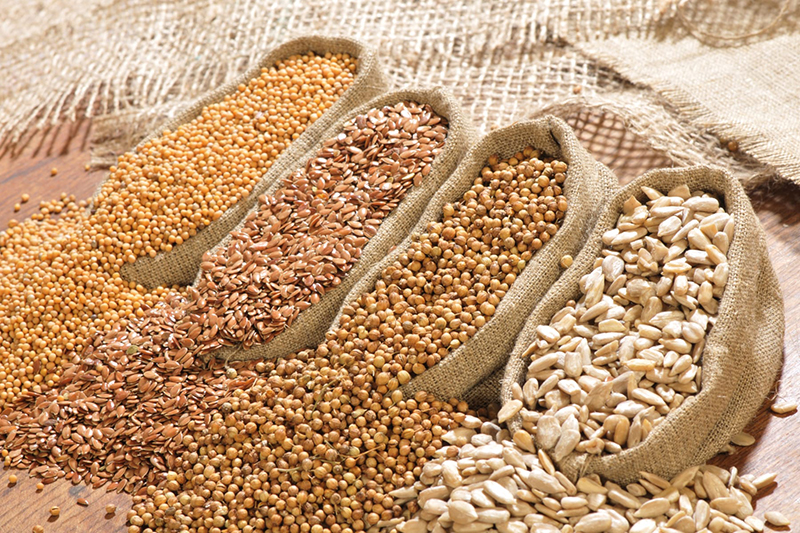Positive outlook for South Africa’s grains and oilseeds in 2021/22 season

This past week South Africa’s Crop Estimate Committee released its monthly update of the size of the 2021/22 summer crop harvest and its initial area plantings for 2022/23 winter crops. For summer crops – maize, soybeans, sunflower seed, sorghum and dry beans – this data comes when farmers have completed harvest in the country’s eastern regions.
The focus has shifted to the central and western areas where activity is underway. In all these regions, the message we receive from farmers is of a relatively large harvest, which is commendable if one thinks back to the start of the season when there were excessive rains that worried some about whether farmers could even manage to plant the typical area.
The winter crops planting – wheat, barley and canola — are also encouraging, showing an improvement from the area planted in the 2021/22 season.
South Africa’s 2021/22 maize harvest is estimated at 14,71 million tonnes. About 7,47 million tonnes are white maize, with 7,24 million tonnes being yellow maize. Essentially, this harvest is down by 10% from the 2020/21 season crop.
Still, this is well above the 10-year average maize harvest of 12,80 million tonnes and annual domestic consumption of 11,80 million tonnes. The annual decline is caused by relatively lower plantings and fairly poor yields in some regions due to excessive rains at the start of the season that I mentioned above. On 22 July, 8,24 million tonnes of maize had already been delivered to commercial silos. The rest will be delivered in the coming weeks as the harvest progresses.
Notably, the current harvest of 14,71 million tonnes implies that South Africa will remain a net exporter of maize, which we anticipate to be just over 3,0 million tonnes in the 2022/23 marketing season (note: this marketing year corresponds with the 2021/22 production season).
Another important and most welcome development is in the soybeans industry, where the 2021/22 harvest is estimated at a record 2,15 million tonnes. This is on the back of expansion in area plantings and large yields. This large soybean harvest will help lessen South Africa’s reliance on soybean oilcake imports. On 22 July, 2,09 million tonnes had already been delivered to commercial silos.
Sunflower seed has also improved notably from the previous seasons, and the 2021/22 harvest is estimated at 922 750 tonnes, the second largest harvest on record. The expansion in area plantings and expectations of large yields underpin this optimism. The harvest is still underway in the western Free State and North West regions. For example, on 22 July 2022, about 792 050 tonnes had already been delivered to commercial silos.
South Africa’s 2022/23 winter crop season started in May, and the plantings have progressed well. For example, wheat plantings are estimated at 553 900 hectares, up 6% y/y, barley plantings are estimated at 106 600 hectares, up 13% y/y, and canola planting are at 121 200 hectares, up 21% y/y. In the case of wheat, the one winter crop planted broadly beyond the Western Cape, a dominant province for winter crops, the expansion in plantings is also in the Free State, Northern Cape, Eastern Cape, North West and Limpopo. This broad expansion is unsurprising following the current attractive higher wheat prices.
Still, these are early days in the season for one to know where the harvest could be this year. In the previous 2021/22 season, we had the largest wheat harvest in two decades. There are hopes for yet another good harvest this season, especially as the soil moisture has generally improved in most regions of the country following the heavy summer rains. Still, we will all take guidance about the actual harvest when the Crop Estimates Committee releases its revised area planted estimate. The first production forecast for winter cereals for 2022 will be released on 30 August 2022.
These data paint a positive picture of South Africa’s grains production. The winter grains still have a long way until we have a reliable estimate of the size of the harvest and its implications of it on prices.
In the case of summer grains, the current production data will have minimal impact on prices. Global events mainly influence the domestic grains and oilseeds prices. The Russia-Ukraine war worries and concerns about 2022/23 global production following reports of heatwave and drought in the Northern Hemisphere continue to present upside support on prices, which are ultimately reflected in the South African grains market.
Still, the fact that domestic grains and oilseeds supplies are at somewhat higher levels provides comfort regarding the domestic needs and even exports to our traditional markets.
Ultimately, the relatively higher grains and oilseeds prices bode well for farmers in areas that didn’t experience much crop damage at the start of the season. Meanwhile, the consumers, livestock, dairy, sheep, goats and poultry producers will likely experience increased costs over the foreseeable future.
Wandile Sihlobo is a South African agricultural economist and author of Finding Common Ground: Land, Equity and Agriculture.
Read also
Wheat in Southern Brazil Impacted by Dry Weather and Frosts
Oilseed Industry. Leaders and Strategies in the Times of a Great Change
Black Sea & Danube Region: Oilseed and Vegoil Markets Within Ongoing Transfor...
Serbia. The drought will cause extremely high losses for farmers this year
2023/24 Safrinha Corn in Brazil 91% Harvested
Write to us
Our manager will contact you soon



